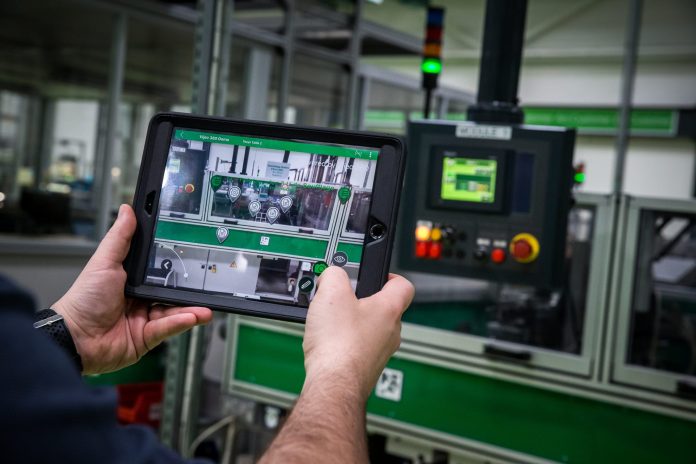France-based energy management and automation specialist Schneider Electric has deployed the first private indoor 5G network in the industrial sector in France. The firm has worked with mobile operator Orange and telecoms vendor Nokia. The network utilises “experimental frequencies”.
The network has been live at Schneider Electric’s factory in Le Vaudreuil, in Normandy in France, since March. The company says the site at Le Vaudreuil has been inducted into the World Economic Forum’s index of ‘lighthouse’ smart factories, along with its factory in Batam, in Indonesia.
It has not registered, however, in Enterprise IoT Insights’ periodical coverage so far of this Industry 4.0 equivalent of the Rock ’n’ Roll Hall of Fame. Schneider Electric claims its factories in Wuhan, China, and in Monterrey, Mexico, have also been earmarked by the World Economic Forum as candidate (‘developing Advanced 4th Industrial Revolution’) lighthouse venues.
The spectrum band utilised for the new 5G network in Le Vaudreuil is unconfirmed. Frequencies in the 2.6 GHz band have been offered to metropolitan businesses by regulator ARCEP in France. The new network hinges on both 5G radio gear and 5G core software from Finnish vendor Nokia.
Five indoor 5G antennas have been installed inside a part of the factory. The network, billed as an “experimental architecture”, covers about 2,000 square metres of production space, and offers download speeds of over 1 Gbps.
Dell’s Latitude 9510 devices, presented as the first 5G-capable business PC running Intel vPro, are being used in the project. “This allows Schneider Electric to benefit from the laptop’s embedded computing power, wherever the user is located,” said a statement from the group.
The trial remit focuses initially on two use cases: augmented reality (AR) in maintenance operations, and remote-controlled robots for virtual factory tours. The idea is to push the limits of industrial IoT with low-latency, high-throughout 5G. More experiments will be developed, said Schneider Electric, including around new industrial artificial intelligence (AI) functions.
Technicians using Schneider Electric’s EcoStruxure Augmented Operator Advisor (AOA) app on 5G tablets or laptops can run live video from the site back to a control room, and also draw down live data about factory equipment from the cloud, so they can consult and take advice from remote operators. The goal is to reduce machine downtime and human error, and streamline maintenance.
Schneider Electric is also offering edge processing at micro data centres to power, cool and protect IT infrastructure. “These ‘all-in-one’ envelopes bring together power, cooling, and urbanisation of servers in a secure place,” said the firm. “They can support the roll-out of 5G on a new site with its new use cases – AR, AI, [and] IoT.”
Meanwhile, the French firm is running remote-controlled robots over the local 5G network to host virtual guided tours around the site. “5G makes it possible for very high-quality video to be used with minimal lag time in the virtual interactions between the visitor and the Schneider Electric guide that accompanies the robot throughout the Le Vaudreuil site,” it said.
Stéphane Richard, chairman and chief executive at Orange, commented: “5G is a breakthrough technology for businesses that will bring numerous industrial applications, such as predictive maintenance, real-time video processing, augmented reality and telepresence. These use cases are powerful and competitive levers that will enable the full potential of Industry 4.0.
“To make the most of this new mobile network, operators, industrial players, public authorities and companies will have to work together. At Orange, we believe in a co-construction approach. Our co-innovation with Schneider Electric for the factory of the future is an example of this. We are poised to support our industrial partners in their digitalisation and in the development of solutions that meet their needs.”
Jean-Pascal Tricoire, chairman and chief executive at Schneider Electric, said: “The health, economic and climatic challenges make digitisation more important than ever for companies. The pilot validates many 5G use cases: augmented reality, remote everywhere, real-time access to data… 5G’s reliability, scalability and durability make it a connectivity solution well adapted to industry 4.0, for greater resilience, competitiveness and sustainability.”

